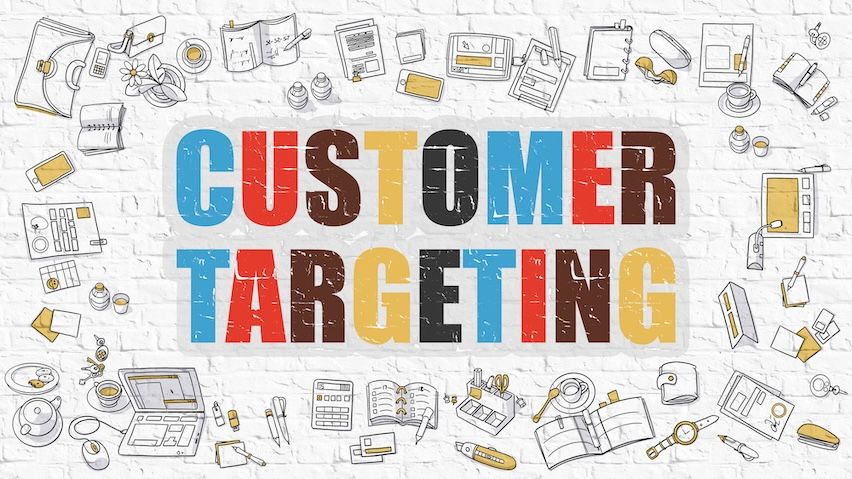Contents
the email tool that makes email marketing simple
Mastering Targeted Mail Marketing: A Comprehensive Guide
Published: May 19, 2024
What Is Targeted Mail Marketing?
Targeted mail marketing involves sending letters or brochures to specific people who might like what you're selling. In it, you choose the right audience based on their interests, age, or where they live. You can use a list of your customers, look for people through public information, or find those who have previously shown interest in similar products.
In this approach, you tailor your message to fit what your audience prefers. For example, if your target audience is young, you focus the content on what appeals to them. Your email's design is also important. It should be eye-catching, to the point, and interesting, so people want to read it.
After sending out the mail, track how many people respond. You can do this using special links or codes that tell you who's engaging with your mail.
The advantage of targeted mail marketing is that it often gets more attention than online ads. People tend to remember physical mail better, and this can lead to more sales. This strategy is particularly effective for products that have an extra appeal when experienced physically.
How to Make Targeted Mail Marketing Work
Set clear goals
The goals should be specific and focused. Establishing precise targets is the foundation of a successful direct mail campaign. Instead of a broad aim like "boost sales," set a target such as "increase sales of Product X by 15% over the next three months." This specificity in direct mail marketing allows for precise planning and measurement.
Goals should also be measurable. Determine how you'll track progress. For sales targets, this could mean tracking the number of units sold. Brand awareness can be measured through surveys or social media engagement.
Ensure your goals are achievable. Unrealistic goals can demotivate your team. If you're a small business, a modest increase in local market penetration might be more attainable than a national-scale campaign.
Relevance is important too. Your goals should align with your broader business objectives. If your focus is expanding into a new market, your mail campaign should target that market.
Finally, make your goals time-bound. Set clear deadlines. This creates urgency and helps in the timely evaluation of the campaign's success. For example, if your goal is to promote a seasonal product, your campaign should run leading up to and during that season.
In summary, clear, SMART goals guide your campaign, ensure alignment with your business strategy, and provide a framework for measuring success.
Analyze best customers for your targeted mail marketing
Studying your best customers provides insights crucial for effectively targeting new ones.
Start by examining sales data. Identify customers who frequently purchase or spend the most. Note what they buy and when. This helps in understanding which products or services are most appealing.
Next, consider customer feedback. Reviews and surveys reveal what your customers value in your products or services. Look for patterns in their compliments or complaints. This feedback often highlights aspects that attract and retain customers.
Engagement patterns are also telling. Assess which marketing channels bring in these top customers and how targeted mailing lists can further refine your marketing campaigns. Is it through email, social media, or your website? Understanding this helps in deciding where to focus your marketing efforts.
Demographics play a vital role. The age, location, and lifestyle interests of your best customers can guide your targeting strategy. For instance, if most are young urban professionals, similar demographics might also find your offers appealing.
Finally, create detailed customer profiles. These profiles are representations of your ideal customers, based on real data. They guide you in targeting similar prospects effectively in your direct mail campaign.
In summary, analyzing your best customers tells you what is working and how to shape your campaign to attract similar prospects.
Identify the target audience
Determining the target audience is another critical step in any mail marketing campaign. Use the insights from your best customers to guide this process. If your top customers are mostly parents in their 30s, your target audience should include similar demographics. This ensures that the campaign resonates with people likely to respond positively. The effectiveness of any direct mail marketing campaign hinges on this precise targeting and keeps your marketing costs down.
Also, consider expanding to new segments. For example, if you've been successful with parents in urban areas, consider similar demographics in suburban or rural areas. This approach helps reach potential customers who share key traits with your best customers but haven't been exposed to your products or services yet.
Geographic targeting is another important aspect. If your product or service has regional appeal, focus on areas where it's likely to be most needed or appreciated. For instance, target coastal zones for a beach-related product.
Additionally, take into account any lifestyle or behavioral traits that define your best customers. If they tend to value eco-friendliness, target audiences with a known interest in sustainability when compiling your mailing lists.
Remember, the more accurately you define your target audience, the more effective your campaign will be. It's about finding the balance between reaching those similar to your best customers and exploring new, promising segments.
Collect data
Gathering data on your target audience is vital for tailoring your direct mail campaign. Start with internal data like purchase history and customer feedback. This information reveals buying patterns and preferences. For instance, if a segment often buys a particular product, they might respond well to a direct mail piece about related offers.
External data sources are also valuable. Market research can provide broad insights into consumer behavior and trends. A purchased mailing list from reputable providers can offer access to potential customers fitting your audience profile. These lists might include demographics, interests, and contact information.
It's important to combine demographic data (like age, income, and location) with behavioral data (like shopping habits and brand preferences). This combination creates a clearer picture of your audience.
Consider lifestyle preferences too. If your product caters to a specific interest, like fitness or cooking, tailor your campaign to appeal to these interests.
Always respect privacy laws and ethical guidelines. Ensure the data used complies with regulations like GDPR or CCPA. Transparency and respect for consumer privacy are crucial in maintaining trust and a positive brand image.
By effectively gathering and utilizing data, you can create a personalized and relevant direct mail drive that resonates with your audience.
Craft your physical mail piece
The ad's aesthetics are crucial in capturing your audience's attention. While the design and content must reflect your brand, they must also align with your target audience's interests and preferences.
Start with the visuals. The visuals must resonate with the interests of your target audience, reflecting an aesthetic that appeals to them. For a younger demographic, pick a vibrant, modern look. A more traditional design should resonate with older recipients. Use images and colors that reflect the trends and interests of your audience.
Content personalization significantly enhances engagement. Address recipients by name and consider customizing content based on their purchase history or expressed interests. For example, if a segment frequently purchases a specific product type, mention related products or offers.
Carefully consider the mail piece format. Postcards are excellent for concise, impactful messages and are often cost-effective. They're suitable for broad announcements or special offers. Brochures or catalogs provide more space for detailed information, making them ideal for introducing a range of products or services. They work well for audiences that appreciate in-depth details.
Remember, the goal is to create a piece that captures attention and encourages action, whether it's a store visit, a website click, or a direct purchase. The right combination of design, personalization, and content can make your direct mail stand out and drive the desired response from your target audience.
Choose the right channel
Picking the right channel for your physical mail campaign means selecting the most effective type of mail piece for your message and audience . The options include standard letters, postcards, brochures, fold-out posters, or innovative formats like sample products.
- Standard letters are ideal for detailed, personalized communication. They work well for an older audience that values thorough information. Remember to take the mail marketing costs into account as this method is usually pricier than email.
- Postcards are excellent for a cost-effective and visually striking option. They are ideal for concise messages and have high visibility.
- Brochures offer more space for detailed content. They're suitable for showcasing a range of products or services. They are effective for audiences who appreciate comprehensive information.
- For a more creative approach, fold-out posters or mailers with a sample product create a memorable mail advertising experience.
- Similarly, door direct mail options can effectively reach local audiences with tailored messages. These are particularly compelling for new product launches or to make a strong, tactile impression.
Each channel has its strengths. Postcards and brochures have higher visibility, but letters offer a personal touch. Creative formats stand out well but may involve higher costs. Consider your campaign goals, budget, and audience preferences to choose the most effective format. The right choice enhances the likelihood of your mail being opened and read, increasing your campaign's impact.
Send the mail
Your piece is ready to be sent but when is the best time? Timing when to send it out is strategic and can greatly impact the campaign's effectiveness. Research the best times to reach your audience. This will vary based on your industry, product or service, and your target audience's daily habits.
For retail products, sending mail just before weekends is a good move as that's when people plan their shopping. Complementing these efforts with digital marketing strategies can further enhance the impact.
For services, a mid-week send-out may yield better engagement by avoiding the weekend disconnect.
Seasonal timing is also important. Align your mailings with seasons or events relevant to your product or service. For instance, send promotional mail for gardening tools in early spring.
Avoid sending mail during major holiday seasons unless your campaign is holiday-specific. During these times, people are often overwhelmed with mail and your message might get lost.
Finally, consider the logistics of mail delivery. Understand the typical delivery times in your target areas to ensure your mail arrives at the intended time. Proper timing can increase the likelihood of your mail being noticed and acted upon.
Measure success
Measuring the success of your direct mail campaign helps you to understand its impact and tailor future strategies. Focus on key metrics like response rate, which indicates how many people engaged with your mail.
Also, look at the conversion rate, which shows the percentage of recipients who took the desired action, such as making a purchase.
Tracking in-store visits or direct sales linked to the campaign provides concrete data on its effectiveness. Utilize tracking codes or QR codes on the mail pieces to monitor these actions. These tools can directly connect a customer's response to your campaign.
Monitoring specific Call-to-Action (CTA) responses is also vital. This includes actions like using a promo code, visiting a website, or calling a phone number provided in the mail. Analyzing these responses helps identify what aspects of your campaign resonated with the audience.
Regularly review these metrics to understand the strengths and weaknesses of your campaign. This analysis forms the basis for refining your approach in future mailings, ensuring continuous improvement and more targeted, effective marketing efforts.
Adjust strategy
You've evaluated your campaign's success but don't stop there. Modify your strategy if necessary. If the response rate was lower than expected, consider altering your message. Focus on refining your mail marketing and direct mail campaigns based on these insights. A different tone, clearer call-to-action, or more compelling content might resonate better.
If a particular demographic responded well, consider focusing more on that group in future campaigns. Alternatively, if a segment did not respond as anticipated, research why and adjust your targeting criteria.
The format of your mail could also influence effectiveness. If a standard letter didn’t engage well, try a postcard or brochure next time. Different formats can yield different responses based on your audience’s preferences.
Remember, direct mail marketing is an iterative process. Each campaign provides valuable lessons. Apply them to refine your approach continuously, ensuring each campaign is more targeted and effective than the last. This commitment to learning and adaptation is key to long-term success in direct mail strategies.
How to Improve Direct Mail Marketing Response Rates
Improving response rates in direct mail marketing can be achieved by incorporating creative tactics like offering free samples and corporate gifting.
Free product samples give them firsthand experience of what you're offering, making it more likely for them to engage with your brand.
Gifting is another effective strategy, especially in B2B marketing. Sending customized gifts to businesses or key decision-makers can strengthen relationships. It shows thoughtfulness and dedication to potential partners or clients. A well-chosen gift can make your mail memorable and encourage the recipients to respond. Whether it’s a branded item that reflects your company's values or something that aligns with the recipient's interests, a small gift can make a big impression.
By integrating these tactics, you create more opportunities for engagement. These methods add a personal touch and show that your business values its potential customers. In turn, this can lead to higher engagement rates, more interactions, and ultimately, better results from your direct mailing.
Targeted Mail Marketing Examples
A cosmetic brand once sent moisturizer samples to customers who had bought similar products. This approach led to more people trying and buying the new item.
A car manufacturer mailed personalized brochures to individuals interested in specific models offering test drives. This resulted in increased visits to dealerships and more car purchases. This gives new meaning to "drive traffic!"
A furniture store reached out to new homeowners with catalogs and discount coupons. They focused on areas where people likely needed new furniture. This move increased both store visits and sales.
These examples highlight the effectiveness of targeted mail in engaging customers and boosting sales. The success lies in knowing your audience and tailoring the mail to their needs and interests.
Direct Mail Marketing vs. Email Marketing: Enhancing Marketing Strategies
Direct mail marketing, with its physical approach, plays a key role in a comprehensive marketing design. Try to create a tangible connection with the audience.
In contrast, email product promotion offers a dynamic way to maintain and build on that initial engagement. It drives traffic back to digital platforms, complementing the physical outreach of mail marketing campaigns. Platforms like Maildroppa enable this seamless transition, providing a straightforward way to keep the conversation going.
Combining these methods balances costs and efficiency. This synergy between physical and digital mediums forms a well-rounded marketing strategy. Direct mail creates the first touchpoint, and emailing sustains the engagement, ensuring a continuous and effective customer journey.








